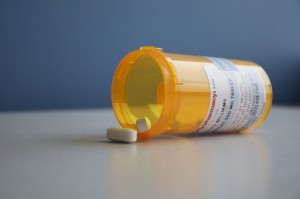 America today faces a heroin epidemic of surreal proportion, generating deaths from overdose, HIV and violent bloodshed between the drug cartels that stoke the rising demand. The surprise is that 2015’s graduating class of junkies hails not from the inner cities, but from middle and upper class America, many with incomes above $50K.
America today faces a heroin epidemic of surreal proportion, generating deaths from overdose, HIV and violent bloodshed between the drug cartels that stoke the rising demand. The surprise is that 2015’s graduating class of junkies hails not from the inner cities, but from middle and upper class America, many with incomes above $50K.
The pushers who supplied their gateway drugs were not back alley dealers, but legitimate pharmaceutical companies operating under the sanction of mainstream western medicine.
It is a case of history repeating itself.
When heroin first entered our country in the late 1800s, it was hawked over-the-counter as a universal cure-all. The highly reputable Bayer pharmaceutical company launched an aggressive marketing campaign to sell its own commercial brand, promoting the drug as being non-addicting … an excellent treatment for morphine addiction! In 1906, the American Medical Association approved heroin for general use and until 1920, when the Dangerous Drug Act pulled the curtain on this medicine show, smack was dispensed freely to kids and adults alike. By the time heroin was reclassified from pharmaceutical to street drug, a market of 200,000 addicts had already been created.
Addicts are loyal customers. Heroin remained a stable, though illicit, commodity through the early ’80s. Then in 1981 the first cases of Acquired Immune Deficiency Syndrome began popping up in cities and panic followed. A fear of AIDS, along with a sudden influx of crack cocaine, changed the habits of younger urban drug users. Heroin became a drug of the aged addict, its popularity ebbing.
At the same time, an insidious new seed of addiction was being sown in pharmaceutical laboratories.
Hydrocodone was created in the 1920s, intended as an effective alternative to morphine with fewer side effects. After extensive testing, the National Research Council found the drug to have a potential to be highly addictive, going so far as to say, “It would be possible for an individual to become addicted to hydrocodone without even realizing it.” However, despite that caveat, hydrocodone was approved by the FDA in 1984 under the brand name Vicodin. OxyContin followed in 1995; Percocet hit the market in 1999. The prevailing attitude of doctors was: “The chance of becoming addicted to pain medications is very low if the patient follows physician’s guidelines.”
And a new generation of addicts was born — respectable citizens, fully insured.
Opioid dependence swept through America like dust devils in a prairie wind. Prescriptions for legal opiate drugs quadrupled from 1999 to 2010. Painkillers were everywhere and patients believed they were safe because the pills were recommended by doctors. The truth of their damaging effects did not begin to dawn until deaths due to pharmaceutical overdose more than tripled from 1999 to 2010, rising higher than the number of fatalities from cocaine and heroin combined.
By 2007, pain clinics in Florida were dispensing drugs as liberally as M&Ms, with little medical justification and by 2010, The Sunshine State was home to 98 of the 100 U.S. physicians who dispensed the highest quantities of painkillers directly from their offices. Faced with this embarrassing evidence, Florida finally enacted stricter measures to curb excessive prescriptions.
It seemed a completely reasonable idea: Cut off the drug source and you curb the addiction. And at first the tactic seemed to work. Overdose deaths from pharmaceuticals decreased in Florida between 2010 and 2012, due largely to stricter controls. Other states followed suit, and on the surface the problem seemed to be abating. But there was a pesky little detail that no one took much notice of at the time: While prescription drug deaths fell, those from heroin overdose more than doubled during the same time period.
Truth: An addict will not stop seeking a fix simply because their first source has been cut off. When one door closes, they scramble quickly for the next escape hatch. People went searching for a similar, cheaper, more accessible high, and drug cartels were only too happy to supply them.
The business of heroin has grown exponentially with this new crop of users. The time was ripe for a change. Trafficking in marijuana had lost value since it become commercially available in some states and dispensed medically in so many others. Drug cartels turned to the more lucrative profits of smack production. Once sold in seedy tenements, heroin became branded and distributed as efficiently as prescription drugs, a move made to appeal to consumers accustomed to shopping convenience and designer labels.
Twelve million Americans reported using opioid drugs for non-medical reasons in this past year. The age of users starts at 12. Many teens began by stealing pills from their parents; by survey, almost 50% believe that taking prescription drugs is much safer than using illegal street drugs. This belief does not keep them from turning to heroin when Mom and Dad’s prescriptions run out.
The top reason given for not receiving help for drug dependency is “a lack of health coverage and affordable treatment.” Fortunately, recent changes in health care are making the likelihood of treatment more of a reality. The Affordable Care Act of 2012 now provides coverage for addiction treatment as standard policy, and the 1988 federal ban on needle exchange programs was finally lifted in 2009. Many cities are now offering amnesty and rehab to addicts who turn themselves in. But it may already be too little, too late.
They say that those who do not learn from history are doomed to repeat it. The pharmaceutical cartels are now shoving psychiatric drugs down our throats, touting them as the key to improved living. I cannot help but recall a quote often attributed to P.T. Barnum: “Fool me once, shame on you. Fool me twice, shame on me.”

